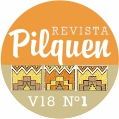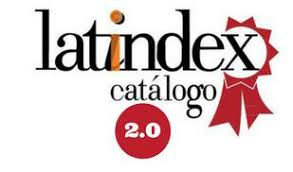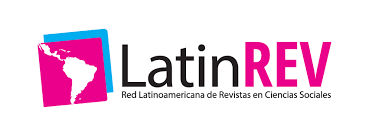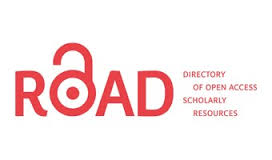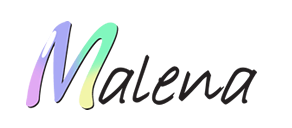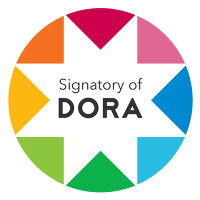Teachers’ beliefs and cognitions about the use they make of analogies for teaching biology
Keywords:
Analogical teaching, Biology, Science teachers, High school education.Abstract
In teaching and learning Biology it is frequent to resort to comparing a new topic to one already known by the students (i.e. analogy). In the present work, we were interested in knowing the teachers' perception and cognitions of these tools, both when they are used by them and when they arise spontaneously from the students. 10 semi-structured interviews were carried out with Biology teachers from the first years of secondary schools in the city of Cipolletti. From their answers we were able to know that they consider analogies to be widely used in teaching their discipline, in particular, in the first years of middle school. They believe that they are very useful, although they warn of some factors that can both enhance or hinder their effectiveness. They point out that analogies serve different functions in teaching, such as presenting a new topic or evaluating the learning process. Unlike the theories on analogical thinking, most of the analogies they recalled involve comparing the novel subject to another from a different domain or disciplinary field, which could imply that they carry out a voluntary search in their memory. Lastly, while they state that their students frequently make analogies spontaneously, they were unable to provide further information about them. The information collected contributes to a better understanding of analogical reasoning in teaching Biology, particularly in relation to the cognitive process of the teacher when using this reasoning.
Downloads
References
Braga Mozzer, N. y Justi, R. “A elaboraçao de analogias como umprocesso que favorece a expressao de concepçoes de professores de Química”. Educaciónquímica, 24 (Extra 1), 2013, pp.163-173.
Clement, J. “Roles for Explanatory Models and Analogies in Conceptual Change”.En S. Vosniadou (Ed.) International handbook of research on conceptual change, Segunda edición. New York: Routledge, 2013, pp. 412-446.
Curtis, R. y Reigeluth, C. “The use of analogies in written text”. Instructional Science, 13 (2). 1984, pp. 99-117.
Dagher, Z. “Analysis of analogies used by science teachers”. Journal of Research in Science Teaching, 32 (3). 1995, pp. 259-270.
De la Fuente, J. y Minervino, R. A. “Pensamiento analógico”. En Carretero, M. y Asensio, M. (coord.) Psicología del pensamiento. Madrid: Alianza. 2008, pp. 193- 214.
Duit, R. “On the role of analogies and metaphors in learning science”. Science Education, 75. 1991, pp. 649-672.
Dunbar, K. “The analogical paradox: Why analogy is so easy in naturalistic settings, yet so difficult in the psychology laboratory?” En Gentner, D., Holyoak, K.J. and Kokinov, B.N., Eds., The Analogical Mind: Perspectives from Cognitive Science. The MIT Press, Cambridge, 2001 pp. 313-334.
Else M. J., Ramírez M. A. y Clement J. “When are analogies the right tool? A look at the strategic use of analogies in teaching cellular respiration to middle-school students”. En P.A. Rubba, J.A. Rye, W.J.DiBiase y B.A. Crawford (Eds.). Proceedings of the Annual International Conference of the Association for the Education of Teachers in Science. Charlotte, North Carolina. 2002.
Felipe, A.; Gallarreta, S. y Merino, G. “Aportes para la utilización de analogías en la enseñanza de las ciencias. Ejemplos en biología del desarrollo”. Revista Iberoamericana De Educación, 37(6). 2006, pp. 1-10.
Frigo Ferraz, D. y Terrazzan, E. “O uso espontâneo de analogias por professores de biologia: observações da prática pedagógica”. Pesquisa em Educação em Ciências, Ensaio 4(2). 2002, pp. 115-129.
Galagovsky, L. R. y Adúriz-Bravo, A. “Modelos y analogías en la enseñanza de las ciencias naturales. El concepto de modelo didáctico analógico”. Enseñanza de las Ciencias, 19(2), 2001, pp. 231-242.
Galagovsky, L. R. y Greco, M. “Uso de analogías para el “aprendizaje sustentable”: El caso de la enseñanza de los niveles de organización en sistemas biológicos y sus propiedades emergentes”. Revista Electrónica De Investigación en Educación en Ciencias, Año 4 Nro. Especial 1. 2009.
Gallarreta, S.; Pomar, A.; Felipe, A. y Merino, G. “Mapeo guiado realizado por estudiantes de ciclo básico del nivel secundario basado en analogías auto-generadas”. II Jornadas de Enseñanza e Investigación Educativa en el campo de las Ciencias Exactas y Naturales. Actas, II (2), La Plata. 2009, pp. 118-124.
Garritz, A. “La enseñanza de la ciencia en una sociedad con incertidumbre y cambios acelerados”. Enseñanza de las Ciencias, 28(3), 2010, pp. 315-326.
Gentner, D. “Structure-mapping: A theoretical framework for analogy”. Cognitive Science, 7, 1983, pp. 155-170.
Gentner, D. y Smith, L. “Analogical reasoning”. En Ramachandran, V. S. (Ed.) Encyclopedia of Human Behavior (2nd Ed.). Oxford, UK: Elsevier. 2012, pp. 130-136.
Glynn, S. “Teaching Science With Analogies: A Strategy for Teachers and Textbook Authors”. National Reading Research,ReportN° 15, 1994.
Gomila, A. “Cambio de marcha en ciencia cognitiva: Ciencia corpórea”. Ciencia Cognitiva: Revista Electrónica de Divulgación, 3, 2009, pp. 49-51.
Holyoak, K. J. “Analogical thinking and human intelligence”. Advances in the psychology of human intelligence, 2, 1984, pp. 199-230.
Holyoak, K. J., y Thagard, P. R. Mental Leaps: Analogy in Creative Thought. Cambridge, MA: MIT Press, 1995.
Kahneman, D. Pensar rápido, pensar despacio. Buenos Aires: Debate. 2012.
Loewenstein, J. “How one’s hook is baited matters for catching an analogy”. En B. Ross (Ed.), Psychology of Learning and Motivation, 53. Londres: Elsevier. 2010, pp. 149-182.
Oliva, J. M. “Qué conocimientos profesionales deberíamos tener los profesores de ciencias sobre el uso de analogías”. Revista Eureka sobre Enseñanza y Divulgación de las Ciencias, 5(1), 2008, pp. 15-28. http://venus.uca.es/eureka/revista/Volumen5/Numero_5_1/Oliva_2008.pdf
Oliva, J. M.; Aragón, M. M.; Mateo, J. y Bonat, M. “Cambiando las concepciones y creencias del profesorado de ciencias en torno al uso de analogías”. Revista Electrónica Interuniversitaria de Formación del Profesorado, 4(1). 2001. http://web.archive.org/web/20041221204258/www.aufop.org/publica/reifp/articulo.asp?pid=206&docid=1057.
Raviolo, A. y Garritz, A. “Uso de analogías en la enseñanza de la química: necesidad de elaborar decálogos e inventarios”. Alambique: Didáctica de las Ciencias Experimentales, 51, 2007, pp. 28-39.
Thagard, P. “Analogy, explanation and education”. Journal of Research in Science Teaching, 29 (6). 1992, pp. 537-544.
Treagust, D.; Duit, R.; Joslin, P. y Lindauer, I. “Science teachers' use of analogies: Observations from classroom practice”. International Journal of Science Education, 14(4). 1992, pp. 413-422.
Trench, M., Olguín, V., y Minervino, R. “Seek, and Ye Shall Find: Differences Between Spontaneous and Voluntary Analogical Retrieval”. Quarterly Journal of Experimental Psychology, 69(4), 2015, pp. 698-712.
Vosniadou, S. y Schommer, M. “Explanatory analogies can help children acquire information from expository text”. Journal of Educational Psychology, 80 (4). 1988, pp. 524-536.
Wong, D. E. “Self‑Generated Analogies as a Tool for Constructing and Evaluating Explanations of Scientific Phenomena”. Journal of Research in Science Teaching. Vol. 30, No. 4, 1993, pp. 367-380.
Downloads
Published
How to Cite
Issue
Section
License
Revista Pilquen, Sección Psicopedagogía sostiene su compromiso con las políticas de Acceso Abierto a la información científica, al considerar que tanto las publicaciones científicas como las investigaciones financiadas con fondos públicos deben circular en Internet en forma libre, gratuita y sin restricciones.
Los trabajos presentados en Revista Pilquen, Sección Psicopedagogía deben ser originales e inéditos y no estar postulados simultáneamente en otras revistas. El envío de todo tipo de colaboración implica la aceptación de las normas editoriales de la revista y la autorización al Comité Editorial para que difunda los trabajos tanto en la revista como en las bases de datos o sistemas de indización en donde se alojan los contenidos de Pilquen.
Los autores que publican en esta revista están de acuerdo con los siguientes términos:
1) Los autores conservan los derechos de autor y garantizan a la revista el derecho de ser la primera publicación del trabajo al igual que licenciado bajo una Creative Commons "Atribución -No Comercial CC BY-NC-SA”, mediante la cual ser permite copiar, reproducir, distribuir, comunicar públicamente la obra y generar obras derivadas, siempre y cuando se cite y reconozca al autor original. No se permite, sin embargo, utilizar la obra ni sus posibles obras derivadas con fines comerciales.
2) Los autores pueden establecer por separado acuerdos adicionales para la distribución no exclusiva de la versión de la obra publicada en la revista (por ejemplo, situarlo en un repositorio institucional o publicarlo en un libro), con un reconocimiento de su publicación inicial en esta revista.
3) El o los autores no recibirán compensación monetaria de Pilquen por el uso del material contenido en el artículo; así como tampoco asumirán ningún costo de publicación de los mismos.
